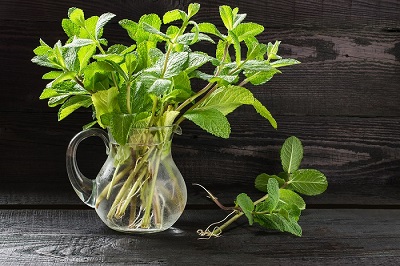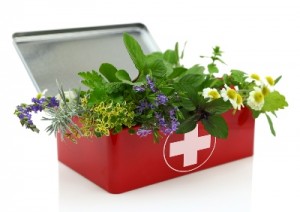Herbals
 Salt is in just about everything you eat. This is particularly true if you eat out often. In fact, the average intake of salt is 3,400 mg a day. The recommended intake is around 2,300 mg and if you have high blood pressure or other sodium related complications then you’re generally required to keep it below 1,500 mg a day.
Salt is in just about everything you eat. This is particularly true if you eat out often. In fact, the average intake of salt is 3,400 mg a day. The recommended intake is around 2,300 mg and if you have high blood pressure or other sodium related complications then you’re generally required to keep it below 1,500 mg a day.
Too much sodium causes heart and renal disease. It also causes cancer and a variety of other health problems. The key to cutting sodium is to get savvy with your cooking.
Herbs can help. Herbs add a powerful flavor punch and they also offer a variety of health benefits. Here are 6 herbs to help you use less salt.
1 – Garlic
Garlic is the queen of seasoning. It’s one of the most flavorful seasonings and you can find it in just about every culture. From Mexican to Greek, garlic is always a favorite. Continue reading
 For most of us, bad breath is a temporary – although inconvenient – problem. Provided that your bad breath is not caused by digestive disorders, periodontal disease, or other serious medical problems, using herbs and natural means to freshen your breath are effective and safe.
For most of us, bad breath is a temporary – although inconvenient – problem. Provided that your bad breath is not caused by digestive disorders, periodontal disease, or other serious medical problems, using herbs and natural means to freshen your breath are effective and safe.
Here are some ideas for herbal breath fresheners:
1 – Cardamom
This is an herb – or, more correctly, a spice – that contains cineole, which acts as an antiseptic. Chew a few seeds to make your breath smell spicy and clean your mouth. Continue reading
 It’s no secret that herbal supplements can be great for your health. They’ve been used for centuries to heal the human body both inside and out. In fact, you may be growing herbs in your garden and not even realize the power they hold.
It’s no secret that herbal supplements can be great for your health. They’ve been used for centuries to heal the human body both inside and out. In fact, you may be growing herbs in your garden and not even realize the power they hold.
If you’re thinking of planting a healing herb garden, there are a few easy-to-start-with herbs to consider planting:
Dandelion
The flowers and roots can be used for many ailments and overall better health. The flowers are generally eaten or made into tea. You can add them to salad, soups or eat raw. They are tasty and contain potassium, beta-carotene and vitamins A and C. Continue reading





